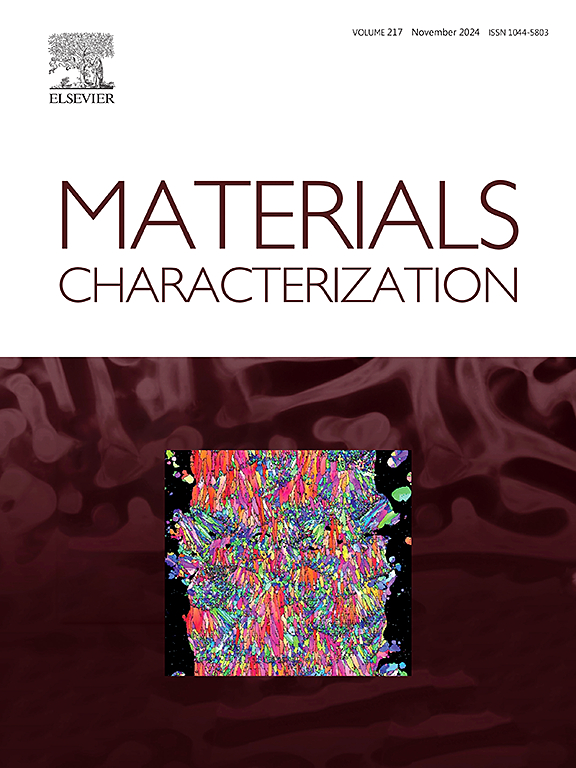On the correlation between thermomechanical conditions and grain size in friction-stir-processed aluminum
IF 4.8
2区 材料科学
Q1 MATERIALS SCIENCE, CHARACTERIZATION & TESTING
引用次数: 0
Abstract
This study was undertaken to quantify the correlation between thermomechanical conditions and the resulting microstructure in friction-stir-processed (FSP'ed) aluminum. To this end, the distribution of local temperatures, strains, and strain rates within the processed zone was simulated using finite element modeling (FEM), while the variation in microstructure and crystallographic texture was measured by electron backscatter diffraction (EBSD). From the generalization of the simulation and experimental data, it was deduced that the primary factor influencing grain refinement during FSP was the processing temperature, while the imposed strain and strain rate had only a secondary impact. The minor influence of the FSP strain on grain size was attributed to the saturation of grain refinement in the high strain range. Considering the relatively low sensitivity of microstructural changes to the strain rate, it was deduced that material flow during FSP involved no grain-boundary sliding.
摩擦搅拌加工铝的热力学条件与晶粒尺寸的关系
本研究旨在量化摩擦搅拌加工(FSP'ed)铝的热力学条件与微观结构之间的关系。为此,采用有限元模型(FEM)模拟了加工区域内局部温度、应变和应变速率的分布,同时采用电子背散射衍射(EBSD)测量了微观结构和晶体织构的变化。通过对模拟和实验数据的归纳,得出影响FSP晶粒细化的主要因素是加工温度,施加的应变和应变速率只是次要的影响因素。FSP应变对晶粒尺寸的影响较小,主要归因于高应变范围内晶粒细化的饱和。考虑到微观组织变化对应变速率的敏感性较低,推断FSP过程中材料流动不存在晶界滑动。
本文章由计算机程序翻译,如有差异,请以英文原文为准。
求助全文
约1分钟内获得全文
求助全文
来源期刊

Materials Characterization
工程技术-材料科学:表征与测试
CiteScore
7.60
自引率
8.50%
发文量
746
审稿时长
36 days
期刊介绍:
Materials Characterization features original articles and state-of-the-art reviews on theoretical and practical aspects of the structure and behaviour of materials.
The Journal focuses on all characterization techniques, including all forms of microscopy (light, electron, acoustic, etc.,) and analysis (especially microanalysis and surface analytical techniques). Developments in both this wide range of techniques and their application to the quantification of the microstructure of materials are essential facets of the Journal.
The Journal provides the Materials Scientist/Engineer with up-to-date information on many types of materials with an underlying theme of explaining the behavior of materials using novel approaches. Materials covered by the journal include:
Metals & Alloys
Ceramics
Nanomaterials
Biomedical materials
Optical materials
Composites
Natural Materials.
 求助内容:
求助内容: 应助结果提醒方式:
应助结果提醒方式:


